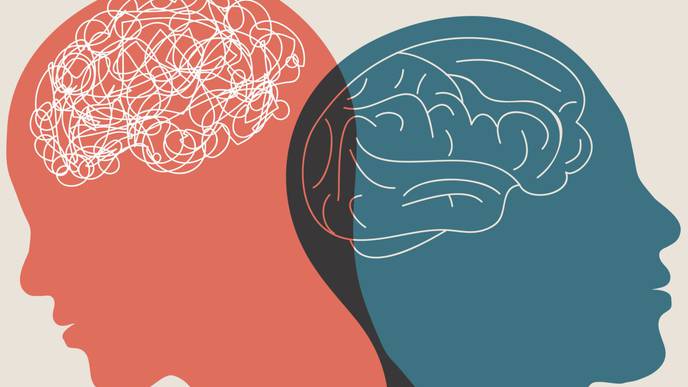AAN Panel Releases New Guideline for Brain Death in Adult and Pediatric Patients

11/14/2023
An expert panel from the American Academy of Neurology (AAN), including representatives from the American Academy of Pediatrics (AAP), the Child Neurology Society (CNS), and the Society of Critical Care Medicine (SCCM), updated the practice guideline on brain death/death by neurologic criteria in adult and pediatric patients. The multidisciplinary panel published the consensus-based guideline in Neurology.
In 2010, the AAN published a guideline on brain death for adults, and in 2011, the AAP, CNS, and SCCM jointly published a guideline for children.
Brain death determination policies can vary across the United States. This new practice guideline can help establish an evidence-based standard protocol for brain death determination for clinicians to follow.
“
Further efforts to harmonize guideline recommendations, hospital policies, and state and federal laws to provide optimal care are needed.
For this guideline, the expert panel combined guidance for clinicians on the process of declaring brain death for adult and pediatric patients. Together, the panel formulated 85 recommendations that included:
- Principles for brain death evaluations
- Qualifications to perform brain death evaluations
- Prerequisites for brain death determination
- Components of brain death neurologic examination
- Apnea testing and ancillary testing as part of brain death evaluation
- Special considerations for determination of brain death, including:
- Consent before evaluation for brain death
- Time of death and discontinuation of organ support
- Evaluation of brain death in a patient who is pregnant
- Preservation of neuroendocrine function
- Evaluation of primary posterior fossa injury
A declaration of brain death is made when there is irreversible cessation of all functions in the entire brain and brainstem. Patients with brain death are in a coma and have brainstem areflexia and apnea with adequate stimulus. The panel cautioned that a lack of meticulous attention to these guidelines could lead to an inaccurate brain death determination.
Determining the Severity and Permanency of Brain Injury
Patients under brain death consideration must be observed for a sufficient amount of time to determine the severity and permanency of the brain injury. This must occur in an environment that has appropriate staff and expertise in managing complications associated with apnea testing. The duration of time needed to determine whether there is the potential for recovery relies on the type of injury that led to the patient’s neurologic state.
The guideline authors recommend for clinicians to wait a minimum of 24 hours after hypoxic-ischemic brain injury for patients aged 24 months and older. For children aged less than 24 months, the brain death evaluation should be performed after a period of 48 hours to establish permanency.
Presence of Clinicians During Brain Death Evaluation
Two attending clinicians are needed for brain death evaluation. Eligible clinicians must be appropriately credentialed and be adequately trained in the components and process of brain death evaluations for children or adults. Trainees or advanced practice providers must be directly supervised by an attending clinician who meets the requirements. Clinicians should be prepared to provide support and guidance to the patient’s family about end-of-life decisions.
Prior to determining brain death, the etiology of the brain injury should be identified. The patient’s apparent brain death state can result from the following:
- Traumatic brain injury (TBI)
- Cerebrovascular event
- Space-occupying lesions
- Hypoxic-ischemic brain injury
- Intracranial infection
- Ingestion of a toxin
- Malignant cerebral edema associated with a metabolic disorder
Neuroimaging should be used to determine the etiology.
When Brain Death Evaluation Is Not Appropriate
Determination of brain death is not appropriate for infants younger than 37 weeks because some brainstem reflexes may not be fully developed. Testing for brain death is not appropriate for patients with evidence of consciousness, preservation of any brainstem reflex, motor movements mediated by the brain or brainstem, or with spontaneous breathing.
Clinicians should rule out potential confounders prior to commencing the brain death evaluation. Clinicians should be mindful that hypothermia may blunt brainstem reflexes, hypotension may suppress brain function, and certain drugs or metabolic derangements may affect central nervous system function.
The Brain Death Neurologic Examination
The brain death neurologic examination includes assessment of unresponsiveness, motor response, pupillary light reflex, oculocephalic and oculovestibular reflexes, corneal reflex, gag and cough reflexes, and sucking and rooting reflexes.
Apnea Testing
After the brain death neurologic examination at least 1 apnea test is required. Safety during the apnea test is of the upmost importance. Clinicians should ensure that patients are not hypoxemic, hypotensive, or hypovolemic, as these conditions increase risk for cardiopulmonary decompensation during apnea testing. Patients should have normal partial pressure of carbon dioxide (35-45 mmHg) and pH (7.35-7.45) to establish whether the patient is hypercarbic at baseline. Patients who demonstrate spontaneous respiratory effort during apnea testing do not meet brain death criteria.
Ancillary Testing
Ancillary testing is not required for brain death determination but may be warranted in certain circumstances. For instance, in the case of a patient who has injuries to the head and neck in which cranial nerve reflexes or apnea testing cannot be performed. The ancillary tests include electroencephalogram, 4-vessel catheter angiography, radionuclide perfusion scintigraphy, transcranial doppler ultrasonography, and computed tomography and magnetic resonance angiography. The guideline authors noted that each ancillary test has shortcomings and none are 100% sensitive or specific.
The Future of Brain Death Determination
Additional research is needed to determine the appropriate number of brain death examinations needed, the appropriate amount of time patients should be observed to determine brain death permanency, to develop additional ancillary testing, and “Further efforts to harmonize guideline recommendations, hospital policies, and state and federal laws to provide optimal care” are needed, the guideline authors wrote.
Disclosures: Some study authors declared affiliations with biotech, pharmaceutical, and/or device companies. Please see the original reference for a full list of disclosures.

Facebook Comments